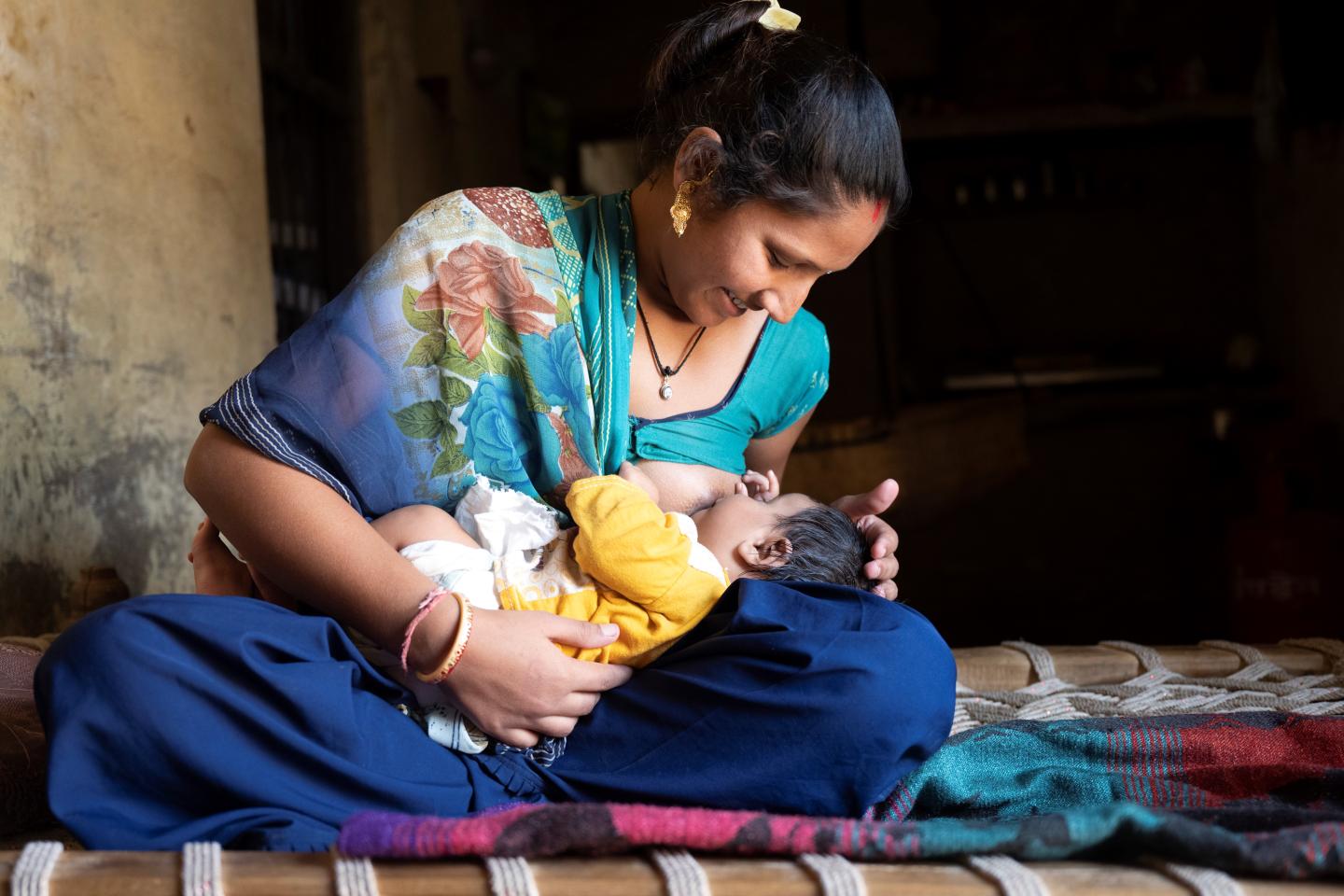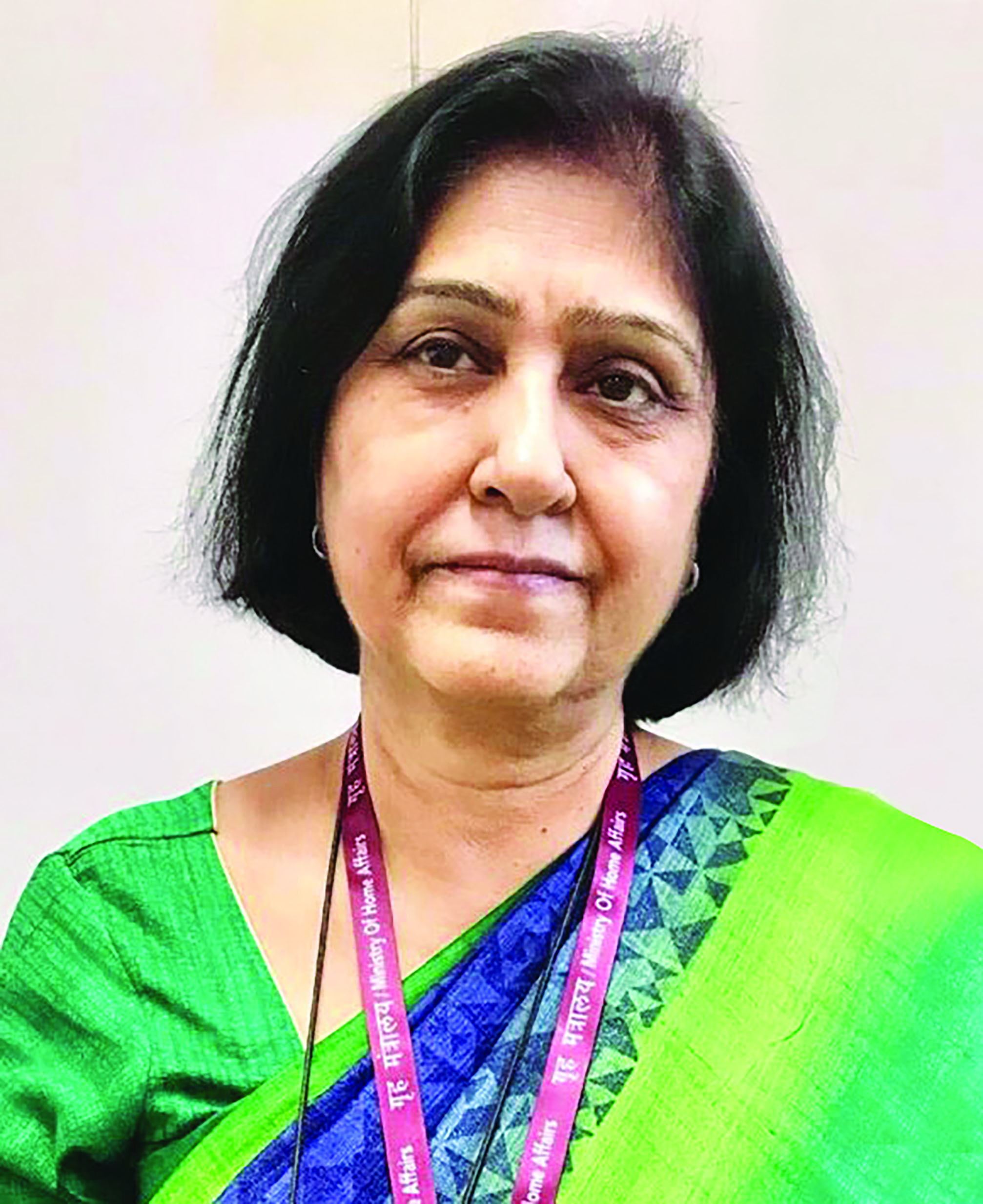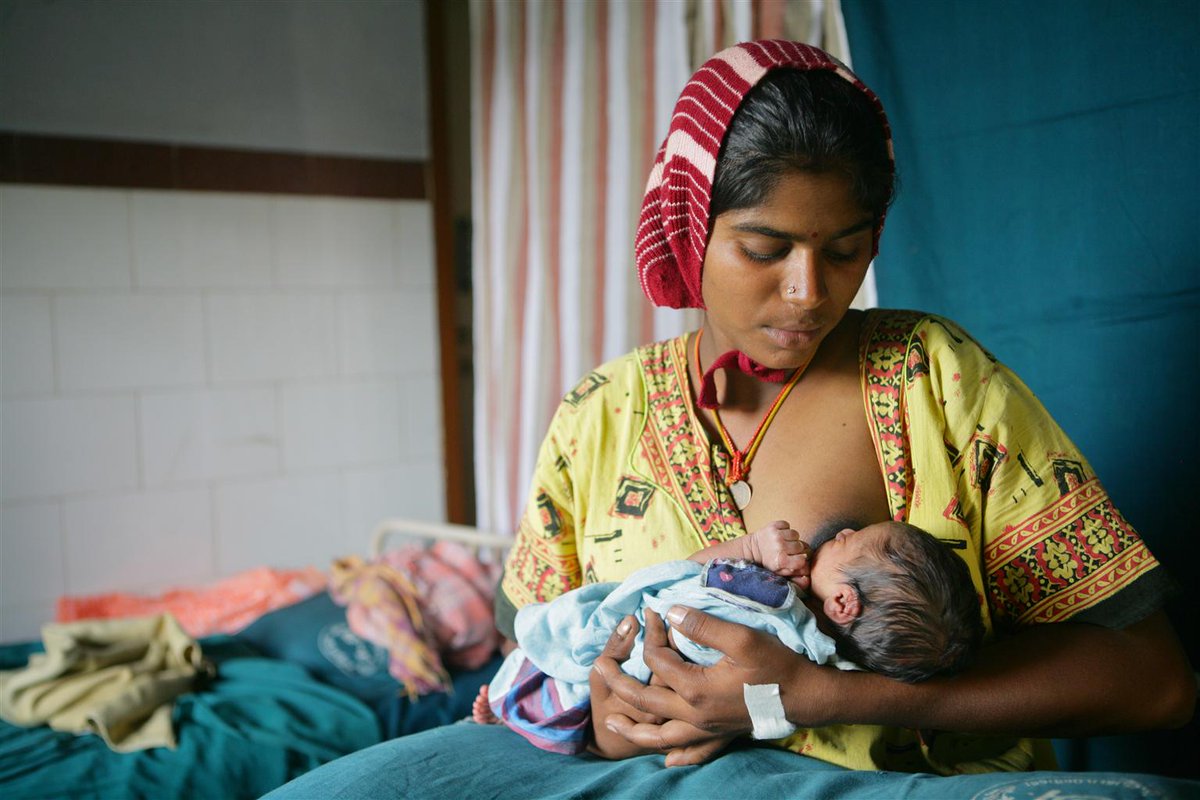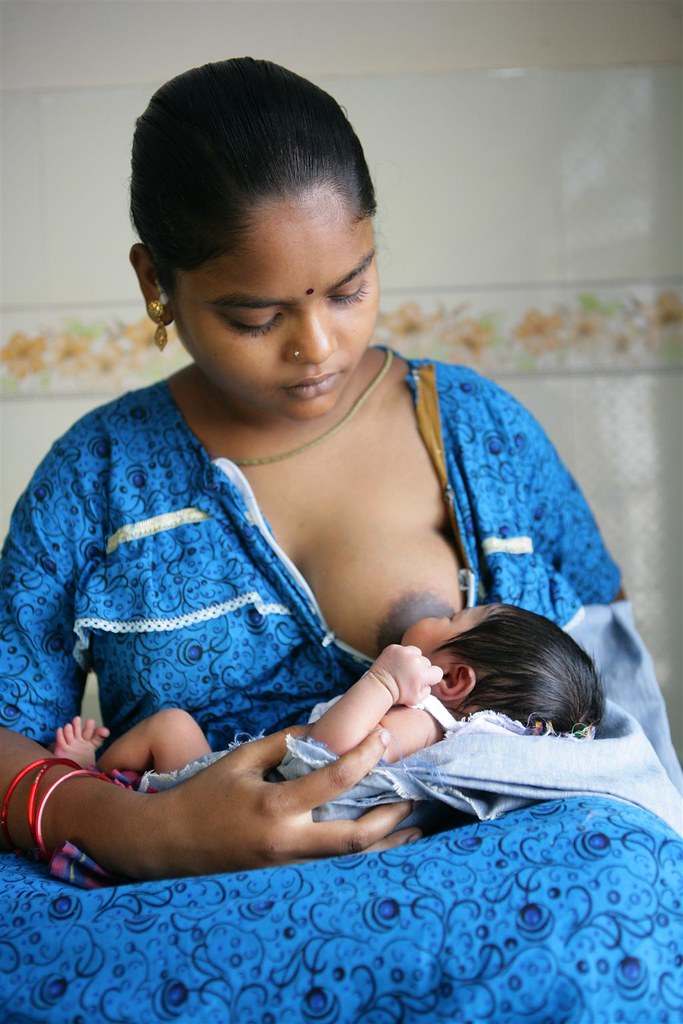Breaking Barriers

Breastfeeding plays a crucial role in the holistic well-being of both infants and mothers. However, intersecting inequalities and obstacles often impede optimal breastfeeding practices. The “MAA – Mother’s Absolute Affection” initiative emerges as a beacon, dedicated to making early initiation and exclusive breastfeeding accessible and inclusive across diverse communities.…
By Manisha Yadav
Breastfeeding is essential for the optimal growth and development of infants and children. Early initiation within one hour of birth and exclusive breastfeeding for the first six months are crucial for the child’s well-being. Breastfeeding has the potential to prevent 13% of deaths in children under five globally, potentially reducing 156,000 child deaths annually in India. It also addresses respiratory infections and diarrhoeal episodes.
Health and Nutrition Benefits
Breastfeeding offers numerous benefits for both the child and the mother, with recent suggestions of its role in poverty alleviation.
The latest National Family Health Survey (NFHS) statistics have recorded the largest improvement in the percentage of children who were exclusively breastfed under six months of age, from 54.9% in NFHS-4 to 63.7% in NFHS-5. The data from the NFHS-4 of 17 States showed the following concerning the key indicators of breastfeeding, revealing the need for focusing on the promotion of optimal breastfeeding practices: Initiation of breastfeeding is 50.5%, though the rate of institutional deliveries is 84.3%. Exclusive breastfeeding is 57.0%. Complementary feeding is 49.6%.

Overcoming Obstacles
Despite its innumerable benefits, very few mothers initiate early breastfeeding. The reason behind this is the fact that women face many barriers to breastfeeding.
Inaccurate information regarding breastfeeding practices, lack of motivation and support from family members, absence of skilled breastfeeding counselling, availability and marketing of breast milk substitutes, and inability to breastfeed due to inadequate maternity protection at the workplace are some of the difficulties women face, as a result of which they cannot practice early initiation of breastfeeding within one hour of birth, exclusive breastfeeding up to six months of age, and continued breastfeeding for two years or longer, as recommended by the World Health Organization.
 According to Dr H P Singh, Senior Child Specialist, Mother and Child Clinic, Vaishali (Delhi/NCR), exclusive breastfeeding in the initial six months of infancy plays a significant role in the physical and cognitive development of the child.
According to Dr H P Singh, Senior Child Specialist, Mother and Child Clinic, Vaishali (Delhi/NCR), exclusive breastfeeding in the initial six months of infancy plays a significant role in the physical and cognitive development of the child.
One in two children below six months of age in India is not receiving exclusive breastfeeding, with the rates varying considerably between and within states.
 Dr Sachin Bhargav, Senior Child Specialist, who also runs SPARSH NGO, said, “A study has revealed the effect of intersecting inequalities in exclusive breastfeeding practice amongst children below six months in India. Exclusive breastfeeding practices varied significantly between the intersecting categories of religion, place of residence, wealth index, and education of the mother. Exclusive breastfeeding practice prevalence was the highest amongst children born in the Urban-Secondary-Poor-Others group (57.9%) and lowest amongst the Rural-Primary-Rich-Others category (34.5).”
Dr Sachin Bhargav, Senior Child Specialist, who also runs SPARSH NGO, said, “A study has revealed the effect of intersecting inequalities in exclusive breastfeeding practice amongst children below six months in India. Exclusive breastfeeding practices varied significantly between the intersecting categories of religion, place of residence, wealth index, and education of the mother. Exclusive breastfeeding practice prevalence was the highest amongst children born in the Urban-Secondary-Poor-Others group (57.9%) and lowest amongst the Rural-Primary-Rich-Others category (34.5).”
“In comparison to children in the most disadvantaged category (Rural-Primary-Poor-Others), children born in the Rural-Secondary-Poor-Others category had the highest odds [OR (odds ratio) 1.213; 95% CI 1.024, 1.437] of being exclusively breastfed, whilst children within the Rural-Primary-Rich-Others category had the lowest odds (OR 0.494; 95% CI 0.345, 0.708). Wide disparities were observed in the odds of engaging in exclusive breastfeeding practice amongst the middle groups than between the most advantaged and the most disadvantaged groups. The inequality indices show varied distribution of exclusive breastfeeding prevalence across the intersecting groups with higher exclusive breastfeeding prevalence noted amongst disadvantaged groups.” he added.
 Says Dr Suneela Garg, Chair, Programme Advisory Committee, National Institute of Health & Family Welfare and Member Lancet Commission, “In order to improve exclusive breastfeeding practice, targeted interventions must acknowledge and adopt a comprehensive approach that addresses inherent inequalities resulting from the intersection of various axes of social stratification.”
Says Dr Suneela Garg, Chair, Programme Advisory Committee, National Institute of Health & Family Welfare and Member Lancet Commission, “In order to improve exclusive breastfeeding practice, targeted interventions must acknowledge and adopt a comprehensive approach that addresses inherent inequalities resulting from the intersection of various axes of social stratification.”
Exclusive breastfeeding (EBF) is a crucial health intervention that helps facilitate the growth and development of newborn children. The World Health Organization (WHO) estimated that nearly 820,000 children could be saved every year with exclusive breastfeeding.
Global Significance of Exclusive Breastfeeding
Exclusive breastfeeding reduces infant mortality and morbidity by facilitating proper immune development and protecting against common childhood diseases like diarrhoea, gastrointestinal infections, pneumonia, and allergies. Intelligence or cognitive scores of the babies have been reported to increase with EBF practice, and exclusively breastfed babies are less prone to childhood overweight and obesity.
Exclusive breastfeeding is also beneficial to maternal health, as it has been reported to reduce maternal risk of breast and ovarian carcinoma, type 2 diabetes, and heart diseases. It helps prevent uterine contraction by increasing oxytocin levels and reduces bleeding during pregnancy. In low- and middle-income countries exclusively breastfed infants have been reported to be associated with a 13% less risk of mortality, compared to their counterparts.
 Despite the benefits and multiple interventions that promote EBF, its prevalence is unacceptably low globally and varies significantly within and between countries. As per the WHO report in 2018, the global prevalence of EBF is 40%. In 2019, a UNICEF report indicated that about 44% of children were exclusively breastfed globally, with Asian countries reporting a slightly high prevalence of 5%.
Despite the benefits and multiple interventions that promote EBF, its prevalence is unacceptably low globally and varies significantly within and between countries. As per the WHO report in 2018, the global prevalence of EBF is 40%. In 2019, a UNICEF report indicated that about 44% of children were exclusively breastfed globally, with Asian countries reporting a slightly high prevalence of 5%.
In India, despite having a relatively high neonatal mortality rate of 32 deaths per 1000 live births, the prevalence of EBF in children below six months stood at 55% in 2016, with only a 9% increase between 2005 and 2015.
Furthermore, there are still regional disparities in the exclusive breastfeeding practice. Among the states and union territories, the highest prevalence of EBF was reported in Chhattisgarh (77.2%) and the lowest in Meghalaya (35.8%). Among the South Indian states, Andhra Pradesh reported the highest prevalence of exclusive breastfeeding (71.1%), followed by Karnataka (54.2%), Kerala (53.3%), and Tamil Nadu (48.3%).
While India has clear policies, guidelines, and legislation intended to promote infant and young child feeding practices, including exclusive breastfeeding, the slow progress in improving EBF prevalence highlights the presence of specific barriers impeding this progress.
Breastfeeding and Sustainable Development Goals (SDGs)
Breastfeeding is a readily available, natural and cost-effective approach to feeding children and thus has relevance to the first goal of “No Poverty”.
It also has relevance to the second goal of “zero hunger” as exclusive breastfeeding for the first six months of life and continued breastfeeding for two years and beyond, provides adequate nutrition to prevent hunger. Breastfeeding has been shown to improve the survival, health and well-being of infants and children. It improves the child’s immunity, prevents malnutrition and in turn reduces infant and child mortality. It has also been shown to prevent respiratory and diarrhoeal diseases in children. In addition to child survival, the health benefits of breastfeeding extend to the mother as well, in the form of protection against diseases like breast and ovarian cancers, osteoporosis and anaemia among others.
Therefore, breastfeeding is relevant to the third SDG on “good health and wellbeing”. Breast milk is rich in essential fatty acids which significantly improve the mental and cognitive development of the child, thus contributing to the fourth goal of “quality education”.
Due emphasis has been given to support of breastfeeding in working women to ensure adequate maternity protection to enable continued breastfeeding along with work, which has been incorporated into various national policies and legislations, making the eighth goal on “decent work and economic growth” relevant in this context.Breastfeeding should be practised by both the rich and the poor alike and therefore supports the tenth goal of “reduced inequalities”. Breastfeeding is, therefore, a necessary tool for achieving sustainable development by 2030.
MAA Initiative Overview
The “MAA – Mother’s Absolute Affection” is a nation-wide breastfeeding promotion programme that addresses the needs of all children including those living in difficult circumstances.
The objective of launching the “MAA – Mother’s Absolute Affection” initiative is to create an enabling environment to ensure that mothers, husbands and families receive adequate information and support to promote breastfeeding practices. It was also highlighted that the difference in breastfeeding rates among rural and urban populations are alike, contrary to the belief of higher rates in rural populations owing to traditional feeding practices, which implies that the need for intensified efforts to promote, protect and support optimal breastfeeding is universal.

MAA Programme Components
The “MAA – Mother’s Absolute Affection” initiative aims to create awareness regarding breastfeeding by strengthening counselling services for supporting breastfeeding through health systems. The chief components of the MAA Programme are community awareness generation, strengthening interpersonal communication through ASHA, skilled support for breastfeeding at delivery points in public health facilities, and monitoring and award/recognition.
Final Takeaways
Says Dr Suneela Garg, “Mother’s milk is the best foundation for the child. Breastfeeding is a practice that has not yet gained the desired popularity in the country, even though it has been emphasised for centuries. Efforts are being made to raise awareness and increase support for breastfeeding among the population. The Centre for Disease Control (CDC) has provided guidelines on strategies to support breastfeeding mothers and increase breastfeeding rates.”

Maternity care practices such as counselling mothers on the importance of exclusive breastfeeding and help them initiate early breastfeeding in the hospital will go a long way in increasing breastfeeding rates. Access to support from healthcare professionals and skilled counselling on breastfeeding practices, peer support programmes, support for breastfeeding in the workplace including employee benefits and services, social marketing for promotion of breastfeeding and monitoring and regulation of infant formula are some of the strategies suggested by the CDC.
The importance of breastfeeding in increasing child survival is a guiding force in continuing the country’s efforts towards achieving health. It should act as a reminder that breastfeeding is a commitment and not an option.
(The author is a medical practitioner)

